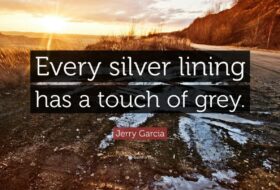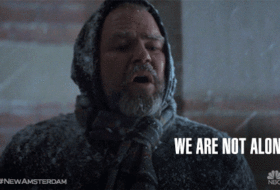We’ve been hearing how visitation has been down over the last few months of summer and that has many wineries worried about their wine clubs. Since most members are converted to club from the tasting room, we need the traffic to acquire a lot of club members, but we also need to be doing a better job as an industry.
What we’ve noticed across hundreds of mystery shops since 2021 is that on average, staff is effectively presenting the wine club 38% of the time – out of all the people coming into our tasting rooms. Effectively presenting the club means doing a lot more than giving out the wine club brochure. What if we were really trying? What if we focused on quality sales, especially while our quantity is low?
To effectively sell the wine club, we’re looking for:
- Having a club brochure available for each taster.
- The club brochure clearly states the features of the club (and therefore the staff can use it as a sales tool, pointing out the great benefits to each guest)
- Using benefits (the ‘why’ someone should join, that emotional connection) and not just listing the features/facts. Facts don’t sell, we need to get to know our guests, build rapport, and then share what’s in it for them.
- Staff is dropping sales seeds about the club around four times – as and when appropriate.
- The server closes the sale by asking if they’d like to join towards the end of the experience.
A reminder on features and benefits. People who are uncomfortable with sales tend to err on the side of information dumping when they get in front of a potential buyer. They will go on and on about what it is and how it works. Using both features and their related benefits to explain and sell the club is much more effective: A feature is what something is. It’s a factual statement about a product or service. A benefit is what something does and answers the question: “What’s in it for the customer?” For example, selling someone a chardonnay by telling them it has malo-lactic fermentation (which is a feature) without explaining the benefit of ML – which is that it gives the chardonnay a creamy, buttery mouth-feel – helps the customer see “what’s in this for me?”
Of course, to be able to sell the club effectively, staff needs to understand how it works, what all the benefits are, and have the buy-in. Do they understand why people enjoy wine clubs? Do they believe in the club they are trying to sell? Do they understand the benefits, not only for the customer, but also for the winery and for themselves?
Five WISE Tips for TR staff selling the wine club:
-
-
- Myth-buster: People visiting our tasting rooms are not inundated with information about everyone’s club. They are not sick of hearing about the clubs. In fact, most guests are expecting (hoping even) to hear about it (who doesn’t want to be invited into a club?). Staff may think everyone is hearing it… but again, our data shows they are hearing it only about 1/3rd of the time.
- People generally need to hear things 7 times before they remember it, so if we’re mentioning it 3 or 4 times, they likely won’t register even hearing it that many times. Best practice is to ‘mention’ it at least 4 times (‘are you a club member?’, ‘this is a club-only wine’, ‘we had an amazing club event last weekend’, etc.) These are all good mentions – it’s not pushy. And dropping these sales seeds along the way makes it easier and more effective to close with an ask at the end.
- Mentioning the club is a good extension of hospitality. Have our staff imagine if they went to their favorite retail store where they buy tons of things and the staff there never mentioned to us that they have a program for loyal customers. Think of Starbucks – is it pushy if the barista asks us if we have the app to get points? Same thing here – an extension of good service & hospitality.
- Again, back to things we like to buy – ask our staff if they have or have ever belonged to a subscription program like Dollar-Shave, Blue-Apron, Amazon, etc. Ask them what they (or someone they know well) likes/liked about this subscription program. Chances are VERY high the things they lists are going to be exactly what our guests want in a wine club – announcements on new releases, curated products shipped to us that we don’t have to think about, discounts, accessibility, etc.
- Often times people who are strong salespeople don’t feel comfortable selling something they personally wouldn’t buy (or join) – if the price of the club is out of their price range, if they have too much wine & a wine club wouldn’t make sense, etc. Remind them that their pocketbook /wallet isn’t our guests and to go back to point #3.
-
So now, if we’re acquiring new club members well, how do we keep them? What’s club attrition like in this environment of a possible recession, high gas prices, and the Euro dropping to make European travel very attractive to people. And, is the bounce back of COVID effecting our clubs? We relied on our members heavily to get through 2020 and beyond, so are we going to see the bubble burst with a reality check of big proportions?
We asked our friends at WinePulse* what they were seeing in their data for wine club attrition rates. Here’s what we learned from the data from wineries segmented by the size of their active memberships:
- Small: less than 1,000 club members
- Medium: between 1000 and 5000 members
- Large: more than 5000 members
Here is the summary:
| Small | Medium | Large | |
| Attrition Rate 2021 | 23.6% | 21.5% | 21.3% |
| Attrition Rate 2022 | 26.4% | 24.8% | 21.7% |
The net/net result?
- Regardless of the size, there is a higher attrition rate this year compared to last year.
- Smaller wineries have a higher attrition rate than larger wineries.
- Larger wineries are doing a better job at preventing cancellations. Only a small increase in attrition rate for the large wineries compared to small/medium wineries.
*Data pulled from 170+ wineries using WinePulse.
Five great ways to offset attrition:
-
-
- Make sure the team is selling the club to qualified guests – those people who are interested in being in the club beyond discounts. If they were just looking for a discount, they’d shop at Costco, so be sure to share benefits beyond the discount they get for signing up. The key is providing a great, memorable experience and benefits that are about a lifestyle – think about privileges that give our members bragging rights.
- Consider a Loyalty Program for club members. Find ways to reward their loyalty.
- Consider incentivizing team members for the longevity of club members – for every [insert time frame here, or number of shipments, etc.] they stay a member, reward the team member who originally signed up the member.
- Use your metrics – find those ‘at risk’ members and make sure to have a program in place to save these members. For example, if we have attrition in one of our clubs at 18 months, let’s find something inexpensive to ship to these members at 15 or 16 months.
- Check in on them every so often. People feel special getting a call or text from ‘their winery.’ Bonus points for you if you make a sale or tasting appointment.
-
For more on attrition and ideas, see this blog: https://wineindustrysaleseducation.com/covid-proof-your-wine-club/
Wine club is the bread and butter of a DTC-focused winery. Let’s acquire the right members and find ways to keep them long term.




